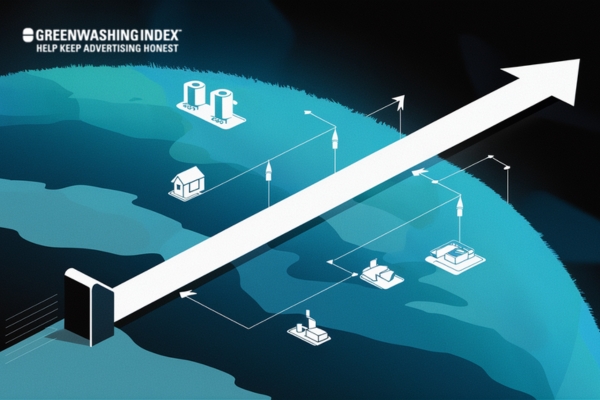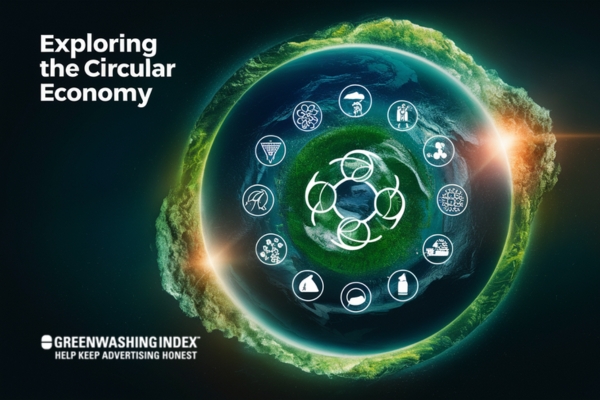

A world where waste piles up, resources dwindle, and we find ourselves trapped in a never-ending cycle of consumption. This is the reality of a linear economy. But what if there was a way to break free and create a more sustainable future? Enter the circular economy, where the focus shifts to conservation, recycling, and reuse.
It’s like turning a page to a new chapter in how we interact with the world around us. In this article, we’ll delve into the differences between a linear economy vs circular economy, uncovering the potential for a more sustainable tomorrow.
The linear economy is a traditional economic model characterized by a “take-make-waste” approach. In this system, raw materials are extracted to produce goods that are consumed and ultimately discarded as waste, with little regard for recycling or reuse. This model promotes high consumption and waste generation, leading to environmental degradation and resource depletion.

As finite resources are exploited without sustainable practices, the linear economy faces significant challenges, including increased pollution and loss of biodiversity. Transitioning to more sustainable models, such as the circular economy, is becoming essential to mitigate these impacts
A circular economy is a sustainable economic model that emphasizes the continual use of resources through practices such as sharing, leasing, reusing, repairing, refurbishing, and recycling. This approach aims to minimize waste and pollution while maximizing the lifecycle of products and materials.

By transitioning from a linear “take-make-dispose” model to a regenerative system, the circular economy seeks to decouple economic growth from finite resource consumption, ultimately fostering environmental health and resilience in economic systems
The linear economy and circular economy represent two fundamentally different approaches to production, consumption, and waste management. Understanding their specifications helps highlight their implications for sustainability and resource utilization.
The linear economy is characterized by a straightforward model often described as “take-make-dispose.” This system operates under the following principles:
In contrast, the circular economy aims to create a closed-loop system where waste is minimized, and resources are reused. Its core principles include:
| Aspect | Linear Economy | Circular Economy |
|---|---|---|
| Approach | Take-make-dispose | Reduce-reuse-recycle |
| Vision | Short-term profitability | Long-term sustainability |
| Sustainability Perspective | Focus on eco-efficiency | Focus on eco-effectiveness |
| Business Model | Product-centric | Service-oriented |
| Waste Management | Waste sent to landfills or incinerated | Waste minimized; resources recycled |
| Consumer Behavior | Encourages a throwaway culture | Promotes responsible consumption |
The linear economy’s reliance on finite resources contributes to environmental degradation and climate change. In contrast, the circular economy promotes sustainable practices that not only reduce waste but also create economic opportunities through innovation in recycling and resource management.
Transitioning from a linear to a circular model is essential for achieving long-term ecological balance and economic resilience. By adopting circular principles, businesses can enhance their competitiveness while contributing positively to society and the environment.
Shifting from a linear economy to a circular one is a significant change that aims to improve how we use resources and handle waste. This shift is essential to tackle environmental issues and boost sustainability. As we move towards a circular economy, there are challenges to overcome and strategies to adopt.
Let’s dive into the obstacles faced and explore effective ways to make this transition smooth and successful.
Transitioning to a circular economy involves several notable challenges:
To effectively transition to a circular economy, several strategies can be employed:
By addressing these challenges and adopting these strategies, we can move towards a more sustainable and resource-efficient future.
The differences between the linear economy vs circular economy is crucial for shaping a sustainable future. The linear model, with its take-make-dispose approach, often leads to resource depletion and environmental harm. On the other hand, the circular economy emphasizes recycling, reusing, and reducing waste, promoting resource efficiency and environmental balance.
Transitioning to a circular economy requires careful planning and commitment, but its benefits are undeniable in terms of sustainability and economic resilience.
To delve deeper into these fascinating topics, I encourage you to explore more insightful articles on our site, where we strive to bring you valuable knowledge and perspectives.
